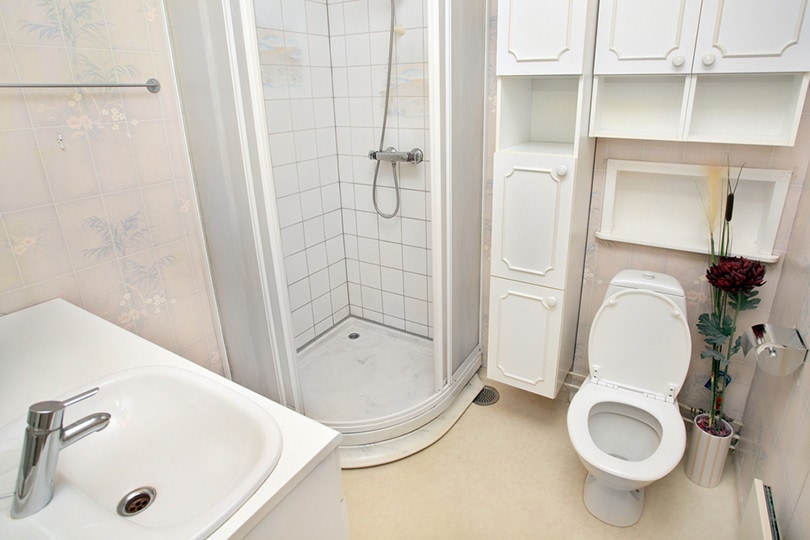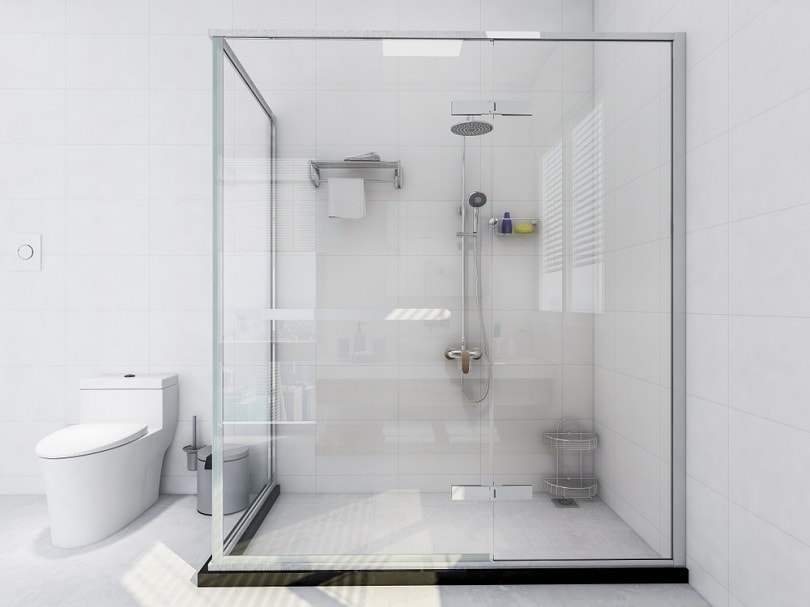How to Waterproof a Shower Pan: 6 Simple Steps
-
Ed Malaker
- Last updated:

The shower pan is a small base that you place at the bottom of your shower to make installation easier and less expensive. Manufacturing companies offer many preformed sizes, shapes, and colors to help you get what you need. However, these pans still require a bit of work to make them waterproof, so here is a list of steps that you can take to protect your home from water damage while enjoying your new shower.
What Is a Shower Pan?

A shower pan is a preformed item that fits at the base of your shower and makes installation easier and less expensive. The pan is usually fiberglass, but manufacturers can use several materials, including plastic or PVC.
Before You Begin
Before you start waterproofing your shower pan, we recommend getting all your parts and tools together so you can complete the project without stopping. Fortunately, you will only need a few things.
- Deck mud
- Level
- Trowel
- Pan liner
- Silicone caulk
The 6 Steps on How to Waterproof a Shower Pan
1. Pre-slope With Deck Mud
The first step in creating a waterproof shower pan is to pre-slope your shower floor using deck mud, a long level, and a trowel. Deck mud is a smooth sandy soil that’s easy to work with and will help you slope the shower floor so water will move toward the drain instead of creating puddles. The long level will help you detect high spots in your deck mud and let you know when you have a slight slant.

2. Install the Pan Liner
If your shower pan did not come with a pan liner, you need to purchase one from your local home improvement center, like Lowe’s or Home Depot. The liner must be large enough to cover the entire base that you created out of deck mud, with enough left over to extend up the walls 5 to 6 inches. Carefully staple the liner to the wall studs above the water line to prevent leaks. You will want to apply silicone caulking around the drain under the pan liner so you can press it down from above to create a tight seal. You will also install the top of the drain, but don’t cut out the hole until you finish the shower, to prevent foreign objects from falling inside.
3. Remove the Excess Pan Liner
With the liner stapled into the wood studs above the curb of the shower and the drain in place, you can use a straight-edge razor to begin removing the excess pan liner from above the staples. You will also start stapling it around the outer curb so it covers the complete base and is securely in place. Take your time to make neat folds so you don’t create areas where mold or mildew can build up or moisture can escape.

4. Install the Shower Pan
The shower pan should fit right into place over the pan liner, and you can usually tighten it with the drain top.
5. Finish Tiling the Shower Wall
With the shower pan now in place, you can finish tiling the shower wall.

6. Seal Any Gaps
With the tile in place, you can use a sand and silicone sealant around the corners and where the tile meets the pan to prevent water from getting behind the wall. When applying the sealant, never cover the weeping holes, as these are essential for enabling water to escape instead of entering the wall cavity and causing damage.
Tips for Maintaining Your Shower
- Rinsing your shower after each use will help reduce the amount of grime and soap scum that builds up, making it easier to clean and reducing your need for harsh abrasives that might lead to leaks.
- Allowing a fan to run in the shower for 15–20 minutes after you finish using it will help reduce the amount of moisture in the air, preventing mold and mildew growth.
- Wiping down your shower after each use will help keep it cleaner, as the steam will help loosen any built-up sludge.
- Use a microfiber cloth to wipe down the shower after each use to reduce the amount of moisture present, which can lead to mold, mildew growth, and bad odors.
- Leaving the door open will help more moisture escape the room, reducing the risk of mold and mildew growth.
- Spray the walls with vinegar, and wipe them down with a microfiber cloth each week to help keep them clean.
- Avoid spraying harsh chemicals in the shower that might strip away the ground or sealant.
- Reseal the grout once or twice a year, depending on how often you use the shower.
- Use a squeegee on the walls and doors to remove excess water when you finish showering.
- Fill a plastic bag with distilled vinegar, tie it around the shower head, and let it sit overnight to clean away mineral deposits and help it run smoother.
 Summary
Summary
Waterproofing a shower pan is not difficult because manufacturers design them to not leak. However, adding deck mud or cement to create a slight slope will prevent standing water, and a carefully installed pan liner will prevent water from getting behind the pan and reaching the wall, where it can cause damage. Applying silicone caulking to the corners and along the walls where the tile meets the pan will create a watertight seal that lasts many years and doesn’t require much maintenance.
You Might Also Be Interested In:
Featured Image Credit: El Greco, Shutterstock
Contents
